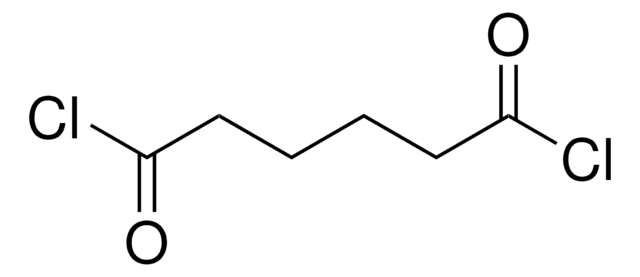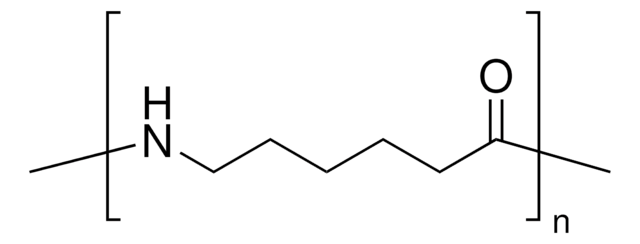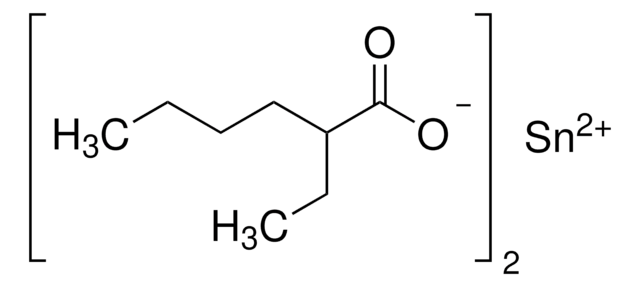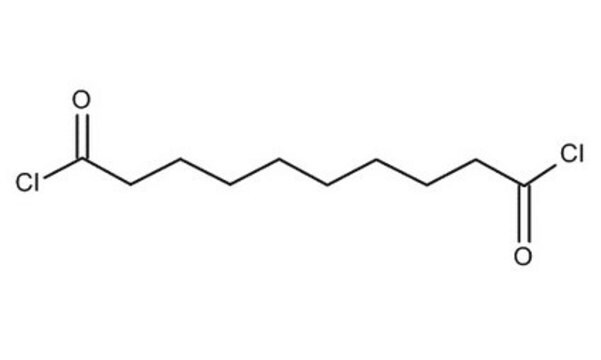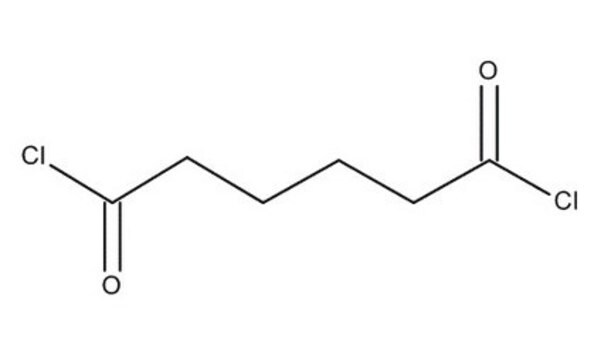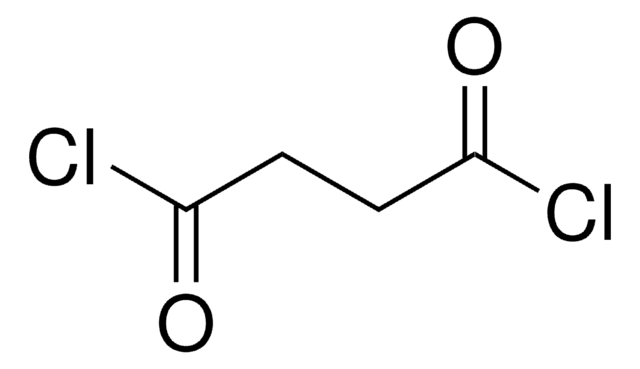Kluczowe dokumenty
236365
Sebacoyl chloride
99%
Synonim(y):
Sebacyl chloride
About This Item
Polecane produkty
Próba
99%
Formularz
liquid
współczynnik refrakcji
n20/D 1.468 (lit.)
bp
168 °C/12 mmHg (lit.)
mp
−5-−3 °C (lit.)
gęstość
1.121 g/mL at 25 °C (lit.)
ciąg SMILES
ClC(=O)CCCCCCCCC(Cl)=O
InChI
1S/C10H16Cl2O2/c11-9(13)7-5-3-1-2-4-6-8-10(12)14/h1-8H2
Klucz InChI
WMPOZLHMGVKUEJ-UHFFFAOYSA-N
Szukasz podobnych produktów? Odwiedź Przewodnik dotyczący porównywania produktów
Powiązane kategorie
Zastosowanie
Hasło ostrzegawcze
Danger
Zwroty wskazujące rodzaj zagrożenia
Zwroty wskazujące środki ostrożności
Klasyfikacja zagrożeń
Acute Tox. 4 Oral - Eye Dam. 1 - Skin Corr. 1B - STOT SE 3
Organy docelowe
Respiratory system
Kod klasy składowania
8A - Combustible corrosive hazardous materials
Klasa zagrożenia wodnego (WGK)
WGK 3
Temperatura zapłonu (°F)
235.4 °F - closed cup
Temperatura zapłonu (°C)
113 °C - closed cup
Środki ochrony indywidualnej
Faceshields, Gloves, Goggles, type ABEK (EN14387) respirator filter
Wybierz jedną z najnowszych wersji:
Masz już ten produkt?
Dokumenty związane z niedawno zakupionymi produktami zostały zamieszczone w Bibliotece dokumentów.
Klienci oglądali również te produkty
Nasz zespół naukowców ma doświadczenie we wszystkich obszarach badań, w tym w naukach przyrodniczych, materiałoznawstwie, syntezie chemicznej, chromatografii, analityce i wielu innych dziedzinach.
Skontaktuj się z zespołem ds. pomocy technicznej

